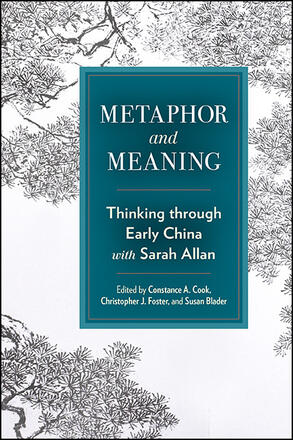
Metaphor and Meaning
Thinking Through Early China with Sarah Allan
Examines questions of cosmos, society, and self through the metaphors and language of ancient Chinese texts and artifacts.
Description
In Metaphor and Meaning, scholars from China, the United States, and Europe draw on Sarah Allan's groundbreaking application of conceptual metaphor theory to the study of early Chinese philosophy and material culture. Conceptual metaphor theory treats metaphors not just as linguistic expressions but as fundamental structures of thought that define one's conceptual system and perception of reality. To understand another culture's worldview, then, hinges upon identifying the right metaphors, through which it then becomes possible to navigate between shared and unshared experiences. The contributors pursue lines of argument that complement, enhance, or challenge Allan's prior investigations into these root metaphors of early Chinese philosophy, whether by explicitly engaging with conceptual metaphor theory or, more indirectly, by addressing meaning construction in a broader sense. Like Allan's interpretative works, Metaphor and Meaning interrogates both transmitted traditions and newly unearthed archaeological finds to understand how people in early China thought about the cosmos, society, and themselves.
Constance A. Cook is Professor of Chinese at Lehigh University, Christopher J. Foster is an independent scholar, and Susan Blader is Associate Professor Emerita of Asian and Middle Eastern Languages and Literatures at Dartmouth College. Together they are also the coeditors of Myth and the Making of History: Narrating Early China with Sarah Allan and Bone, Bronze, and Bamboo: Unearthing Early China with Sarah Allan, both published by SUNY Press.
Reviews
"Metaphor and Meaning speaks to important issues regarding the nature of religious belief, political philosophy, food and ritual, and other issues that are of high importance in understanding the history of early China. While the essays address different aspects of thought and culture from Chinese sources, they share a common interest in uncovering early worldviews, and use complementary methodologies in interpreting early sources. Their placement in a single volume offers the reader a rare opportunity to see in proximity important examples of research that speak to a common set of questions as well as diverse but complementary research approaches." — Shana J. Brown, University of Hawaiʻi at Mānoa